 NYC-based PIRA Energy Group believes that oil sands and other high cost developments will be required to balance the market. In the U.S., the total commercial stock surplus widened to the largest of the year. In Japan, crude runs began rising and the stock bulge corrected back downward. Specifically, PIRA’s analysis of the oil market fundamentals has revealed the following:
NYC-based PIRA Energy Group believes that oil sands and other high cost developments will be required to balance the market. In the U.S., the total commercial stock surplus widened to the largest of the year. In Japan, crude runs began rising and the stock bulge corrected back downward. Specifically, PIRA’s analysis of the oil market fundamentals has revealed the following:
Longer-Term Oil Price Outlook Marked Down vs. August
We have brought the post-2020 price outlook down and are now limiting the upside. We still believe that oil sands and other high cost developments will be required to balance the market. However, price responsive US and global shale should limit the upside central tendency.
Growing Concern over Medium Term Downside Price Risk
We have not changed our longer-term Reference case for US natural gas prices vs. August. However, we have boosted the probability of the low case to reflect both demand side concerns and the potential for lower supply cost. If cost reductions in Haynesville are widely confirmed, we will reconsider the Reference case outlook.
As Gas Is Being Repriced along the Curve, European Power Is at a Turning Point
With spot and forward gas prices continuing to look for a bottom, European power appears to be moving toward a new dispatching equilibrium. While the recent years have seen plummeting spark spreads and large losses in gas-fired generation, the current fuel pricing dynamics suggest that gas will be moving back into the stack, displacing more efficient coal units. In other words, we expect a structural recovery in the spark spreads both in the U.K and the Continent.
European Carbon: Stronger Fundamentals Needed to Maintain Price Gains
Eastern European countries have started their 2015 power sector free allocations. Looking ahead, EUA auction volumes/supply will increase from 2016-2018 with the easing of backloading. Longer term emissions growth is expected to be weak, especially with the announced German lignite plan. Implied carbon prices from fuel switching have been moving strongly lower as well. Substantial Phase IV ETS reform discussions are not expected until next year.
Coal Pricing falls again Amid Wider Energy Market Weakness
Seaborne coal pricing faded yet again last week, with weaker oil and gas prices driving the market lower. API#2 (Northwest Europe) prices lost the most amount of ground as heavy European imports of LNG drove NBP gas prices down considerably from the prior week. With a lack of support from the oil market, and persistently weak coal fundamentals, it is difficult to envision a scenario where coal prices rise appreciably over the balance of the year, and into 2016. However, PIRA’s expectation of a rebound in 2H16 oil prices should give coal prices some uplift, if only from higher production cuts and technical trading factors.
Weaker Asian LPG Markets Search For Direction
Asian LPG prices were pulled lower with Crude oil last week. Cash and futures propane prices continue to look disconnected with physical cargoes arriving in December called near $465 while futures for the same month traded $30 lower. The front futures spread is now steeply backwardated at +$40/MT – the most since the end of last winter, indicating weaker demand lies behind the prompt needs. Butane prices were crushed more than 10% lower to be called near $475, just $10 above cash propane.
Ethanol Prices Tumble
U.S. ethanol prices plummeted the week ending November 6, as demand for ethanol-blended gasoline decreased the prior week, while plant output and inventories increased. Margins only dropped slightly as corn prices also fell.
New Data on Chinese Growth, Emerging Market Industrial Output, and European GDP
October Chinese data showed different sectors continuing to expand at different paces. Data on manufacturing remained disappointing, but vehicle sales experienced a major upturn as the government’s latest stimulus program kicked in. Emerging market industrial production data improved broadly in recent months, though there were some exceptions (most notably, Brazil). A modest pace of GDP growth continued in Europe during the third quarter.
Lows Not Safe
The November WASDE has made it even more difficult to be constructive across the board. While new lows were made this week in major contracts with the exception of SRW, those lows are very vulnerable in our opinion.
U.S. Stock Surplus Widens
The total commercial stock build for the week of November 6, compared to a draw last year, widened the total commercial stock surplus to the largest of the year. Crude stocks built in spite of crude runs increasing sharply, and we expect crude runs to continue to increase as refinery turnarounds rapidly decline in the next few weeks. Overall export-adjusted and HDD-normalized product demand growth has been struggling of late, down 1.1% over the most recent four weeks. Year-to-date adjusted product demand is up 0.46 MMB/D, or 2.5%. The most recent employment news is positive, even as the industrial sector lags.
Tighter Balances, But Still Anxious for More Seasonal Heating Loads
With November at nearly the halfway point, the market is being driven not only by weather that is on track to average ~15% milder than the 10-year normal, but also by a supply trajectory that for now appears aware of the market’s limitations with 4.0 TCF in stocks and its heavy reliance on price-induced gains from coal-to-gas substitution.
Eastern Grid/ERCOT Market Forecast: November 2015
On-peak prices fell month-on-month in most markets as cooling loads and gas prices both faded. Price increases were observed only in New England (the only market to see stronger gas prices) and at MISO's TX hub. Despite a strong October employment report suggesting a healthy economy, weather-adjusted loads declined across the East. Unadjusted loads fell by 2.8 aGW from the prior year. Gas prices have been revised down with larger adjustments at the front end of the forward curve, particularly in the Northeast markets. As a result, power price forecasts have also been reduced with the exception of the Ontario market (up about $2/MWh). Implied heat rate projections are mostly higher than in last month's report.
Ethanol Values Decrease Again
U.S. ethanol prices followed corn futures lower. In its World Agricultural Supply and Demand Estimate the USDA projected higher corn production and lower consumption, a bearish signal.
Nervous Markets
While the world rightfully focused on the horrific Paris attacks over the weekend, traders wondered what it would mean to U.S. equity markets, oil prices, and the dollar. Grain traders spent the weekend lamenting what Friday’s new low closes for corn and soybeans would mean come Sunday night.
Japanese Runs Begin Rising, Crude Stock Bulge Corrects Back Downward
Crude runs increased as turnarounds wind down. Crude imports moved sharply lower allowing crude stocks to correct back downward after the large build seen the previous week. Finished product stocks drew again due to declines in naphtha and kerosene stocks. Gasoline and gasoil stocks changed only slightly. Margins remain good and strengthened on the week due to higher cracks for middle distillates and naphtha.
It Will Take Time For U.S. Shale Oil Activity To Pick Up Once Crude Prices Recover
Massive industry layoffs and the reduction in inventory of working drilling rigs will contribute to a slow recovery in activity once oil prices start to rebound in 2016. Several sources estimate that the industry has so far lost around 200,000 jobs worldwide and many drilling rigs have been scrapped. In addition, banks and operators will want to see improved prices for a sustained period of time (i.e. several months) before increasing lending and drilling activity respectively. The high activity levels experienced in 2014, when WTI was close to $100/Bbl, will probably not be seen for many years.
Record Norwegian Exports for November Hint at Aggressive Defense against LNG
But this is not just a story of the traditional pas de deux between spot and oil-indexed gas prices, as plenty of fundamental evidence for weakness is also in plain sight. Let’s start on the supply side with Norwegian gas exports, which are not just well above normal for November; they are approaching an all-time high for any month on record. Why Norway would be exporting record amounts of gas when we are experiencing a year-on-year decrease in weather-based demand is a root issue here.
European Oil Demand Growth Finally Turns Positive in 2015
After a decade of negative oil demand growth, demand turned higher this year. Demand growth was centered in Mediterranean Europe and got a significant boost from oil demand in Turkey. While lower oil prices were clearly helpful in boosting demand, economic growth is still too anemic to account for all the positive growth. Our demand model includes only the key drivers of oil demand like price and GDP; other unspecified factors are implicitly included in our forecast error. Evidence points to the positive role these unspecified, non-traditional factors played in oil demand growth this year.
Asian Stock Levels Lend Support to Winter Spot Price Run-Up
Storage availability for Asia’s key utility buyers has played a role in the recent uptick in imports, though it is nowhere near as big as current estimates of available capacity might suggest. PIRA estimates for end Sept. storage levels across Asia show storage levels between 55% to 70% of capacity for the top buyers.
Key Indicators, Commodities Fall
The S&P 500 moved lower for the week, having its worst week in three months. Most of the related indicators deteriorated (Russell 2000, volatility, and U.S. high yield credit, emerging market bond credit). Overall, commodities declined rather sharply, both energy and ex-energy. With regard to currencies, the U.S. dollar was again mostly stronger. U.S. government bond yields have continued to inch higher on short and longer term maturities as markets continue to contemplate the Fed raising short-term rates at their next meeting which will conclude December 16th.
U.S. Shale Oil Operators Point Towards Continued Declining Activity & Production
Capex spending has fallen dramatically through the course of 2015, resulting in a lower rig count, and for the first time quarter-on-quarter (Q/Q) production decline of shale oil in the U.S. In 3Q15, PIRA estimates that U.S. shale crude and condensate production declined by about 3.2% Q/Q to 4,200 MB/D. Shale operators that have reported guidance (about a third of total shale oil production) point to a further 3.8% Q/Q decline in 4Q15.
Iran and Iraq Come to Deal on Natural Gas
Iran has signed a new contract with Iraq to export natural gas to the country’s southern port city of Basra. Based on the contract, Iran will pipe 20-25-mmcm/d of gas to Basra for a period of six years. The supply – that will increase to 45-60-mmcm/d in a later stage – will be used to feed the main power plant of the city. Exports will start with an initial supply of 7-mmcm/d for three years and will then increase to the target volume.
Global Equities Decline Broadly
On the week most of the tracking indices lost ground, with some falling back sharply. In the U.S, only “utilities” managed a small gain. The worst performers were retail, consumer discretionary, and energy. Most of the international indices also posted losses with only the Japanese tracking index able to post a largely neutral performance.
November Weather: U.S., Europe and Japan Warm
At midmonth, November looks to be 14% warmer than normal on the 10-year-normal basis for the three major OECD markets. On a 30-year-normal basis the markets are 21% warmer. The November forecast takes into account first half actual weather and the current forecast for the rest of the month.
The information above is part of PIRA Energy Group's weekly Energy Market Recap - which alerts readers to PIRA’s current analysis of energy markets around the world as well as the key economic and political factors driving those markets.


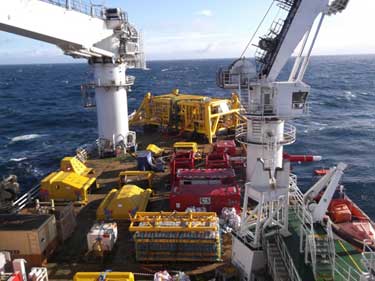 CIS - Technip Alvheim - back deck with manifold
CIS - Technip Alvheim - back deck with manifold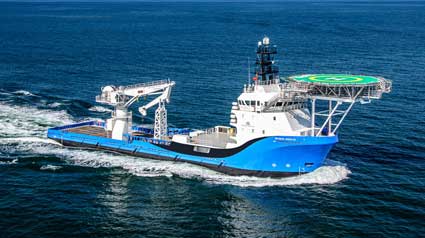 In November, 2015
In November, 2015  NYC-based
NYC-based  Paul Danos, executive vice president of
Paul Danos, executive vice president of  Wild Well Control awarded
Wild Well Control awarded 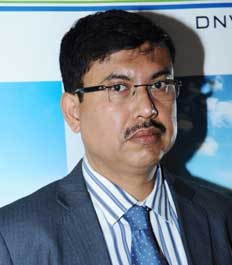 The Middle East faces a substantial challenge to ensure hundreds of ageing offshore oil and gas structures operate safely beyond original design life.
The Middle East faces a substantial challenge to ensure hundreds of ageing offshore oil and gas structures operate safely beyond original design life. As the end of October saw upstream operators release disappointing Q3 results, with Shell in particular announcing record losses, a completely different picture is being painted in the downstream sector. A host of North American refiners, including Tesoro, Valero Energy, Phillips 66 and Marathon Petroleum have seen profits soar as the low oil price has improved margins; WTI cracking margins for Q3 2015 averaged $22.02 compared to $14.01 in 2014.
As the end of October saw upstream operators release disappointing Q3 results, with Shell in particular announcing record losses, a completely different picture is being painted in the downstream sector. A host of North American refiners, including Tesoro, Valero Energy, Phillips 66 and Marathon Petroleum have seen profits soar as the low oil price has improved margins; WTI cracking margins for Q3 2015 averaged $22.02 compared to $14.01 in 2014. As previously announced on July 15, 2015,
As previously announced on July 15, 2015,  Despite a recent oil price around the $45 per barrel range,
Despite a recent oil price around the $45 per barrel range, 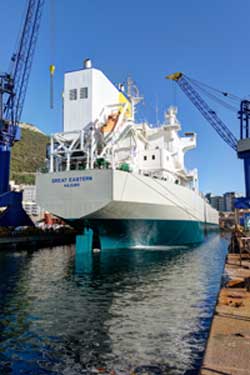 Gibdock
Gibdock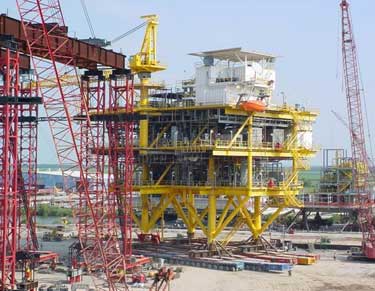 Dynamic Industries, Inc., a leading fabrication and service provider to the global Oil, Gas and Energy industries, announced that its specialty craft division, Dynamic Construction Services (DCS), has been awarded a key contract to provide fabrication, offshore construction and scaffolding services as part of a program to upgrade existing drilling rigs in the Gulf of Mexico.
Dynamic Industries, Inc., a leading fabrication and service provider to the global Oil, Gas and Energy industries, announced that its specialty craft division, Dynamic Construction Services (DCS), has been awarded a key contract to provide fabrication, offshore construction and scaffolding services as part of a program to upgrade existing drilling rigs in the Gulf of Mexico.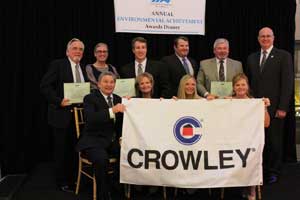 More than 100
More than 100 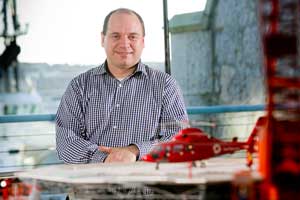 Alexander MacLeod, founder of Cambla
Alexander MacLeod, founder of Cambla On 20 April 2010, the Macondo blowout in the Gulf of Mexico killed 11 men, burned and sank the Deepwater Horizon drilling rig, devastated the Gulf of Mexico and caused unprecedented socio-economic and environmental damage to Louisiana and Texas. To unravel the cause of the blowout, the assessment of petroleum engineering data during the well's final hours has been critical.
On 20 April 2010, the Macondo blowout in the Gulf of Mexico killed 11 men, burned and sank the Deepwater Horizon drilling rig, devastated the Gulf of Mexico and caused unprecedented socio-economic and environmental damage to Louisiana and Texas. To unravel the cause of the blowout, the assessment of petroleum engineering data during the well's final hours has been critical.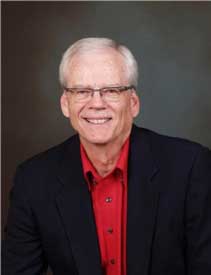 Commenting ahead of his SPE Distinguished Lecturer presentation, ‘Assessing and Applying Petroleum Engineering Data from the 2010 Macondo Blowout’, Mr Turley said: “Investigating the circumstances surrounding the cause of the blowout is essential, so we can then apply lessons learned from the incident to future well work in deep water, shallow water and onshore.
Commenting ahead of his SPE Distinguished Lecturer presentation, ‘Assessing and Applying Petroleum Engineering Data from the 2010 Macondo Blowout’, Mr Turley said: “Investigating the circumstances surrounding the cause of the blowout is essential, so we can then apply lessons learned from the incident to future well work in deep water, shallow water and onshore. Piper Jaffray Companies
Piper Jaffray Companies OPTION (Optimizing Oil Production by Novel Technology Integration) aims to significantly improve simulation tools for the prediction and control of the flow between the horizontal wells and the reservoir – with a focus on enhancing oil recovery.
OPTION (Optimizing Oil Production by Novel Technology Integration) aims to significantly improve simulation tools for the prediction and control of the flow between the horizontal wells and the reservoir – with a focus on enhancing oil recovery.